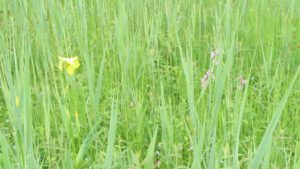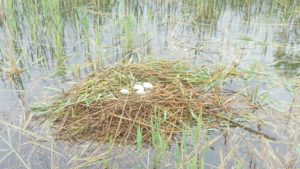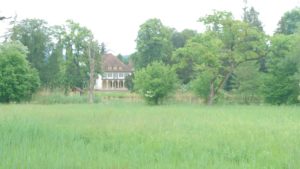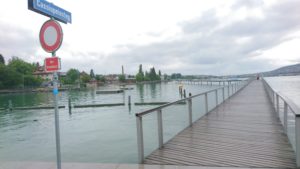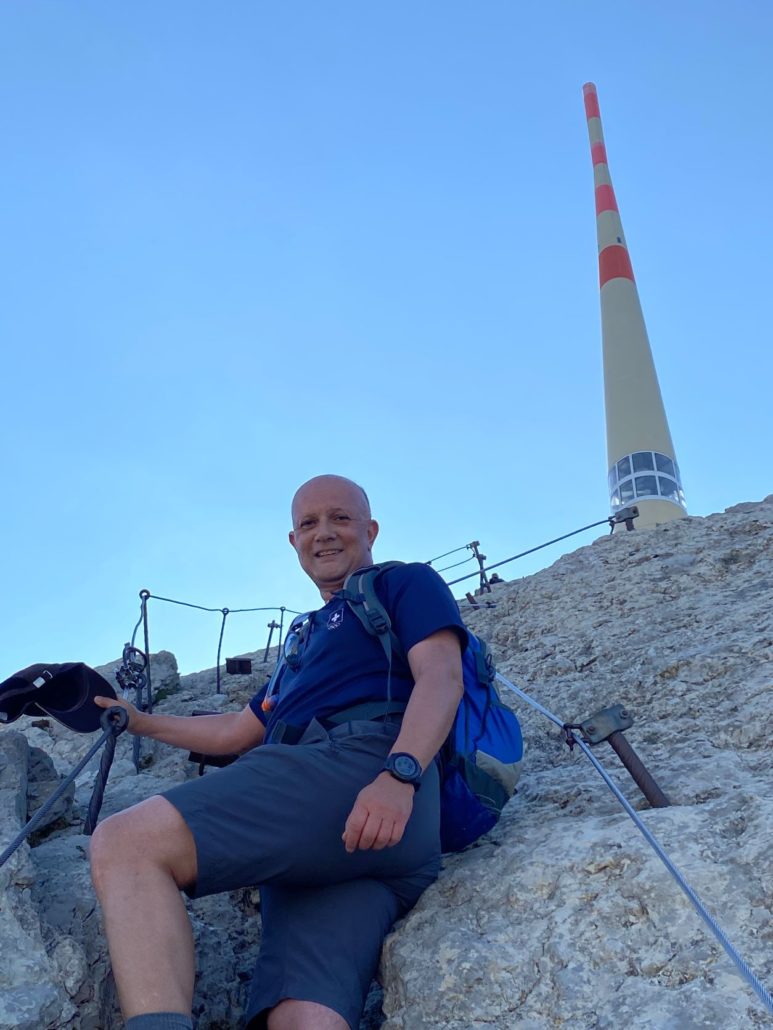Two possible routes can be taken to continue the trail: the boat to Rapperswil (affordable accommodation is available in the Pilgerherberge ((Pilgrims’ Hostel)) in Rapperswil) or on foot along the south side of the Lake of Zurich. The route is described below. The trail offers beautiful areas along the shores of the Lake but also a fairly long route on an asphalt road. From Horgen onwards we pick up the trail again beside the Lake, some distance from the road. It would also be possible to take the train from Wollishofen to Horgen and continue the trail from there. Most of the walk along the road could therefore be avoided. Those who prefer to avoid the busy road can follow the alternative route just above the lake, a hiking trail through small villages. For this purpose, branch off from the main road at Wollishofen harbor, cross the railway line and climb up between the houses (Widmerstrasse), approx. 100 meters of altitude up to Kalchbühlstrasse, turn left and from there follow the hiking signs to Horgen, where you descend to the lake and follows the lakeshore towards Wädenswil.
Useful sights and facts
| Km 5.5 | If you wish to take your time, a cable car can carry you from Adliswil up to Felsenegg, where wonderful views across the Lake of Zurich can be enjoyed. |
| Km 10 | In Thalwil a number of grand mansions can be seen which partially originate from the time of the Industrial Revolution, and principally from the textile industry in the 19th Century. |
| Km 19 | Horgen. On the lakeside there are the remains of some lake dwellers’ residences (3’900 bis 3’500 v. Chr.). Two Celtic women’s graves in Thalacker hail from the 2nd Century while Alemannen graves from the 7th Century (around the time of Columbanus) can be found near the chapel in Stockerstrasse.
A ferry transports cars and foot passengers across the Lake from Horgen to Meilen. |
| Km 25 | Wädenswil. Archaeological findings from the Neolithic and Bronze Ages confirm a settlement going back to Roman Times (1st Century). Wädenswil is today’s final goal.
The large Rosenmatt Park is located below the reformed church. The richly structured building with tuff ornamentation and Art Nouveau elements was built in 1898 by Prof. Albert Müller, a student of the famous professor of architecture Gottfried Semper, for the silk industrialist Emil Gessner-Heussner. In 1939/40 the building was converted into today’s Reformed parish hall. |
ATTENTION: From Wädenswil there are two possible routes for our next Stages.
Alternative 1: Stage 7a goes to Pfäffikon, then across the dam of the Lake to Rapperswil and then follows stage 8a from Rapperswil to Wattwil (the end goal).
Alternative 2: Stage 7b is the same route as stage 7a but it then branches off in Pfäffikon following the shore of the Lake to Tuggen (final goal). From Tuggen it continues along stage 8b to Wattwil (the end goal).
From Wattwil there is only one route we can take, namely that of Stage 9 to Magdenau (final goal).
Alternative 3: Another possibility is from Wädenswil: take the path to Einsiedeln (important place of pilgrimage) and spend the night there. For this purpose, walk along the lake to Richterswil (station). There you leave the lake and follow the signs to Einsiedeln. The next day the route (Way nr. 4) leads either via Pfäffikon to Rapperswil or directly to Tuggen, from where it is followed again by the ordinary route 7b (from Rapperswil) or 8b (from Tuggen).



